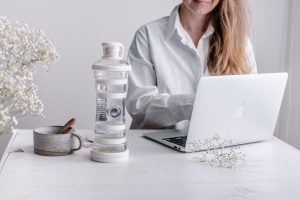No products in the basket.
We’ve been told “8 glasses a day” as advice for quite a long time—but is it accurate for all of us?
Let’s try to understand how much water we should take in daily based on our body, lifestyle, and even the location we live in. No matter who we are—a gym enthusiast, a person who works from home, or a busy mom juggling a million things—this blog gives us a hydration formula customized for each and every one of us.
Why Water Isn’t Just a Recommendation—It’s a Requirement
Water isn’t just a thirst quencher—it’s our body’s power supply. It regulates temperature, cushions our joints, aids digestion, and even sharpens the performance of our brain.
Dehydration doesn’t scream—it whispers:
Afternoon fatigue
Headaches without reason
Dry skin and dull focus
Cravings mistaken for hunger
Hydration = Vitality.
The “8×8 Rule” Myth Busted
“Drink 8 glasses of 8 oz water a day.”
We have heard this a lot. But it originated from a 1945 health guideline misinterpreted over time. It didn’t account for water from food, climate, or activity levels.
So what should we do instead?
The Personalized Hydration Formula
Baseline Formula (According to the U.S. National Academies):
Men: 3.7 liters (125 oz) per day
Women: 2.7 liters (91 oz) per day
This includes all fluids: water, coffee, tea, and food moisture.
But that’s just the start.
Key Factors That Change Our Daily Water Needs
1. Activity Level
Sweat it out? Drink it back.
Add 12–24 oz per hour of exercise.
2. Climate
Live in a humid, hot, or high-altitude zone?
Add 16–32 oz to your daily intake.
3. Diet
Eating spicy food, high protein, or salty meals?
Bump up hydration to aid digestion and flush toxins.
4. Pregnancy/Breastfeeding
Add 10–20 oz more per day.
What Counts as Hydration? (It’s Not Just Water)
You don’t need to guzzle gallons of plain water.
Here’s what does count:
Herbal teas
Fruits & vegetables (like cucumber, watermelon, oranges)
Broths and soups
Electrolyte drinks (in moderation)
Pro Tip: 20–30% of your hydration usually comes from food.
Signs You’re Hydrated (Without Measuring Every Ounce)
Your pee is pale yellow
You rarely feel thirsty
Your skin isn’t dry or flaky
You feel focused and energized
The “Drink When You’re Thirsty” Trap
Thirst is a late signal. Like a low-battery warning.
By the time you’re thirsty, you may already be 1–2% dehydrated—which can affect cognitive performance.
Instead, try the Hydration Rhythm:
Hydration Schedule Example:
After waking up—1 glass
Mid-morning – 1 glass
Pre-lunch – 1 glass
Mid-afternoon – 1 glass
Pre-dinner – 1 glass
Evening – 1 glass
= That’s 6 easy glasses without even thinking.
Common Hydration Myths (Busted)
Myth: Coffee and tea dehydrate you.
Fact: They do count toward hydration—unless too much is consumed.
Myth: Clear urine is the goal.
Fact: Pale straw-colored urine is ideal. Clear may mean over-hydration.
Myth: You need sports drinks after a workout.
Fact: Unless you’re exercising intensely for over an hour, plain water is enough.
Hydration Hacks You’ll Actually Use
Download a water reminder app (like Plant Nanny or WaterMinder).
Get a smart bottle that tracks intake
Infuse water with fruits or herbs for flavor
Use a reusable marked bottle to track ounces
Pair water with habits (like 1 glass before every meal)
So… How Much Water Should You Drink Per Day
Listen to your body—but don’t wait for thirst.
Aim for 2.5–3.5 liters/day, adjusting for activity, food, and environment.
Hydrate smarter, not harder.

